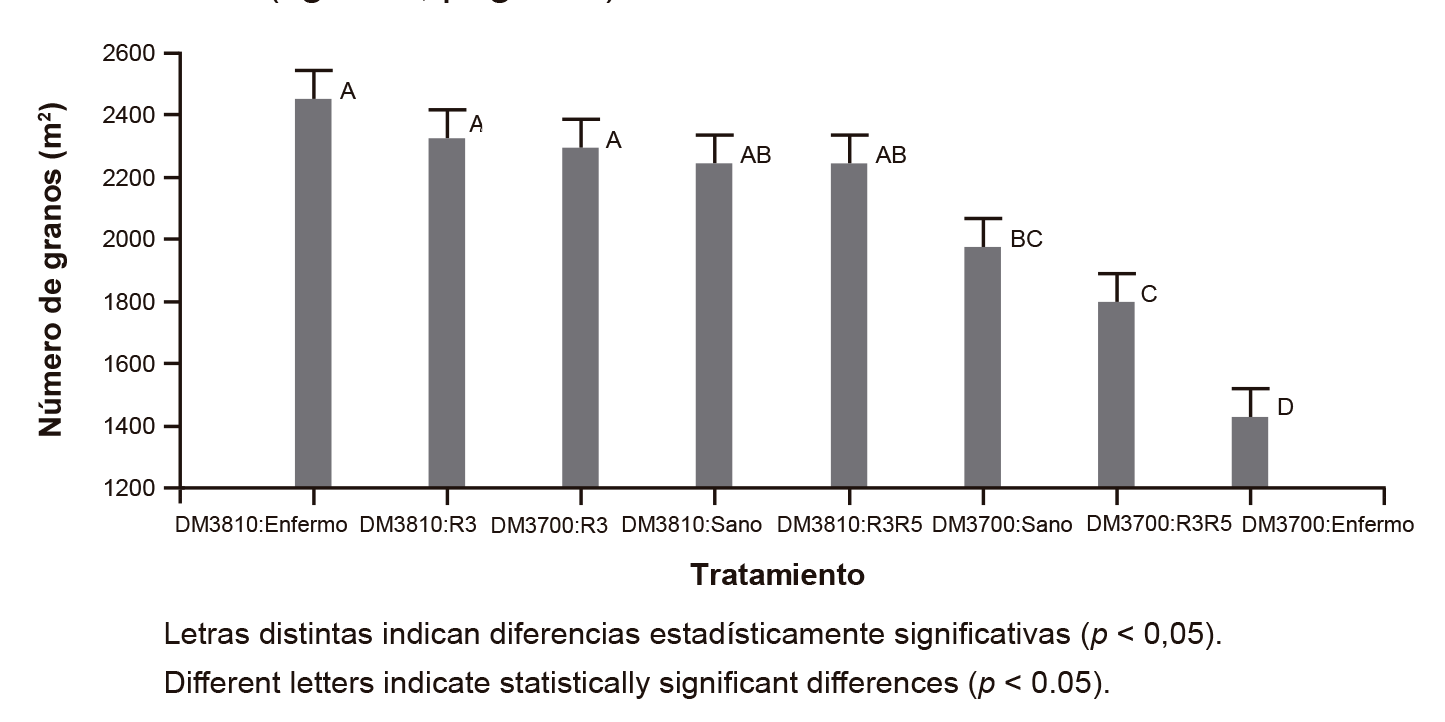Impact of frogeye leaf spot (Cercospora sojina k. Hara) on yield and soybean seed industrial components: oil and protein
Keywords:
chemical quality, soybean growth stages, strobilurin, grain number, grain weight, triazoleAbstract
The mixture of strobilurin and triazole (S+T) was applied to 2 contrasting cultivars in susceptibility to frogeye leaf spot (FLS) (DM3700 y DM3810) at growth stages R3 or R3+R5; untreated control and healthy control were also included. Incidence and severity of FLS, yield, grain number (NG), grain weight (GW), grain oil and protein were evaluated. Different levels of severity between DM3700 (susceptible) treatments, and absence of FLS in DM3810 (resistant) treatments were observed. Negative correlation was found between severity and yield. In DM3700 higher values of severity corresponded to lower yields (2117 kg/ha). DM3810 exhibited the higher yields without statistical differences between treatments (3478 kg/ha). Although NG and PG decreased in the untreated control DM3700, NG reductions were more pronounced. No increments of yield, NG and/or PG were attributed to S+T in DM3810. The maximum severity achieved by the more susceptible cultivar was not sufficient to significantly decrease oil and protein. FLS could be controlled on the susceptible cultivar with a single application of S+T at R3. The use of the resistant cv to FLS was effective in controlling the disease, and showed no additional benefits in yield due to fungicide application. It was concluded that FLS did not affect the chemical quality of the grain.
Downloads

Downloads
Published
How to Cite
Issue
Section
License

This work is licensed under a Creative Commons Attribution-NonCommercial-ShareAlike 3.0 Unported License.
Aquellos autores/as que tengan publicaciones con esta revista, aceptan las Políticas Editoriales.










.jpg)




